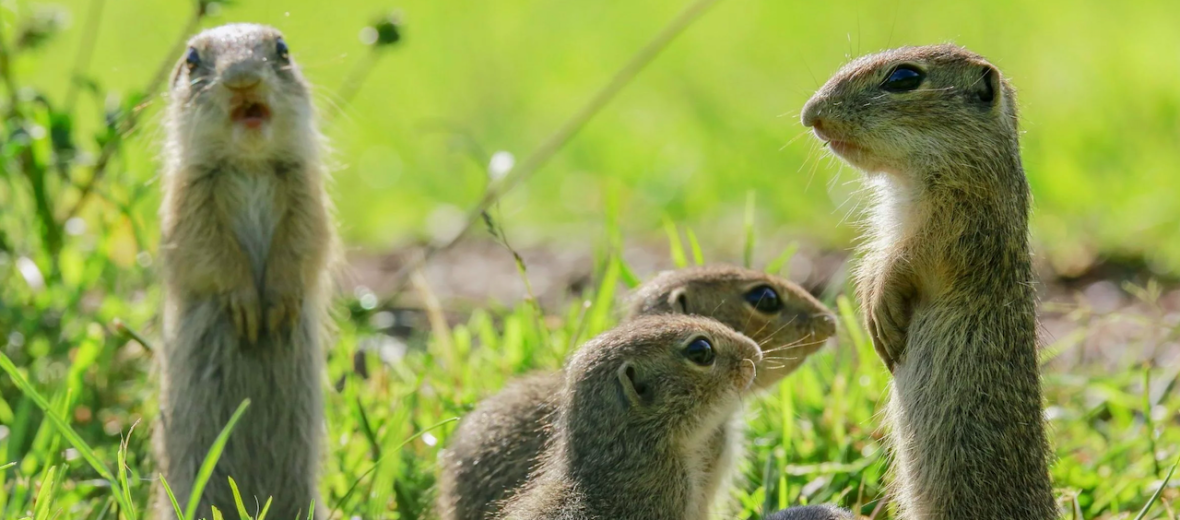
The European ground squirrel, aka souslik or European souslik, can be found throughout eastern Europe and into Asia minor. They typically inhabit dry banks, parks, lawns, steppes, pastures, and sports fields. Due to the threats of habitat destruction at the hands of urban and housing developments, agriculture, aquaculture, logging, and mining; vehicle strike (being hit by vehicles); development of roadways that divide their habitat; hunting; trapping; humans disturbing them via recreational activities; fires and fire suppression; pollution; and climate change, these critters are listed as Endangered by the IUCN. Their numbers are also decreasing.
First the Stats…
Scientific name: Spermophilus citellus
Weight: Up to 8.5 ounces
Length: Up to 7.8 inches, plus up to a 3.54 inch tail
Lifespan: Up to 10 years
Now on to the Facts!
1.) These squirrels are primarily diurnal (active during the day).
2.) They dig branching tunnels that can be as much as 6+ feet deep.
3.) European ground squirrels spend upwards of 50% of the day foraging for food.
4.) Various plants, grasses, flowers, seeds, agricultural crops, insects, and even eggs of a variety of ground nesting birds and/or their chicks are consumed.
5.) When threatened, they will emit a loud, shrill sound that alerts the others to run for cover.
But wait, there’s more on the European ground squirrel!
6.) These cute little critters are often seen sitting upright, when not hidden, as they are looking for predators.
7.) Weasels, foxes, domestic cats, and various birds of prey all hunt these ground squirrels.
Did you know…?
Males are called bucks, females are called does, and the young are called pups, kits, or kittens.
8.) During the winter months these critters will cover the entrance to their burrows and hibernate; each in their own chamber.
9.) While hibernating, they will often awaken and dine on their food reserves.
10.) A group of squirrels is called a colony, dray, or scurry.
But wait, there’s still more on the European ground squirrel!
11.) Females undergo up to a 26 day gestation (pregnancy) that yields up to 8 pups.
12.) After up to 6 weeks, the pups are ready to leave the doe’s side and start life on their own.
Now a Short European Ground Squirrel Video!
Be sure to share & comment below! Also, check out the Critter Science YouTube channel. Videos added regularly!
Want to suggest a critter for me to write about? Let me know here.



